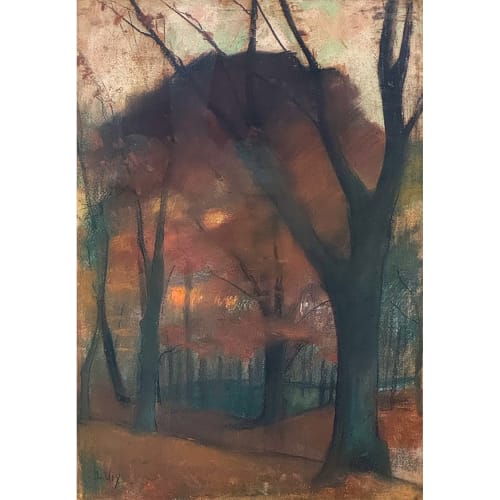Lesser Ury was born Leiser Leo Ury on 7 November 1861 in Birnbaum in the province of Posen, which belonged to Prussia. The son of a Jewish master baker, he spent his early years in the small town of Birnbaum, but moved to Berlin with his family after the death of his father. There, at the age of 16, Lesser Ury began studying painting at the Düsseldorf Art Academy under the historical painters Heinrich Lauenstein and Andreas Müller. In order to deepen his knowledge, he then moved to Paris via Brussels, where the French nude and portrait painter Jules-Joseph Lefebvre gave him important impulses. Lesser Ury travelled through Flanders, studied the old masters of the Golden Age and finally arrived in Munich. His application to the Academy of Fine Arts was accepted on the same day as that of the Impressionist Ernst Oppler. Lesser Ury returned to Berlin before the latter in 1887.
Lesser Ury not only found a home in Berlin, but above all a wealth of motifs, which he repeatedly reinterpreted. The streets and coffee houses of Berlin are a recurring theme in the work of this idiosyncratic painter. The promising career of the maverick Ury came to a halt due to his falling out with Max Liebermann. As president of the academy and an influential leading figure in the Berlin art scene, Liebermann repeatedly prevented Ury from taking part in exhibitions - possibly also out of jealousy of the increasing fame of his independent rival, whose unwieldy character often led to friction with the other Berlin artists. Only Lovis Corinth opened the door to the Berlin Secession for Lesser Ury again, which even led to an honorary membership in 1921. Despite his frequently documented artistic attachment to Berlin, Ury repeatedly travelled to London and Paris, from which he brought back a large number of new paintings.
Lesser Ury often executed his compositions with a dark colour palette. He was a particularly frequent guest at Café Bauer, which had electric lighting thanks to a generator developed by Werner von Siemens as early as 1884, which, together with a large selection of international magazines and newspapers, tempted many guests to read late at night. For Lesser Ury, this meant a rich selection of atmospheric evening and night scenes in which he could play with light and shadow. In addition to city and coffee house scenes, it was landscape painting that occupied Ury throughout his life. He was particularly interested in capturing certain atmospheric moments such as the evening twilight or the clearing sky after a thunderstorm. The legend persists that the National Socialists destroyed a large part of Lesser Ury's work. In fact, numerous paintings were auctioned off by the Paul Cassirer auction house immediately after his death (and thus before the National Socialists seized power and the Second World War began) and are now privately owned. Lesser Ury died in Berlin on 18 October 1932. Source: https://www.lempertz.com/de/kataloge/kuenstlerverzeichnis/detail/ury-lesser.html
